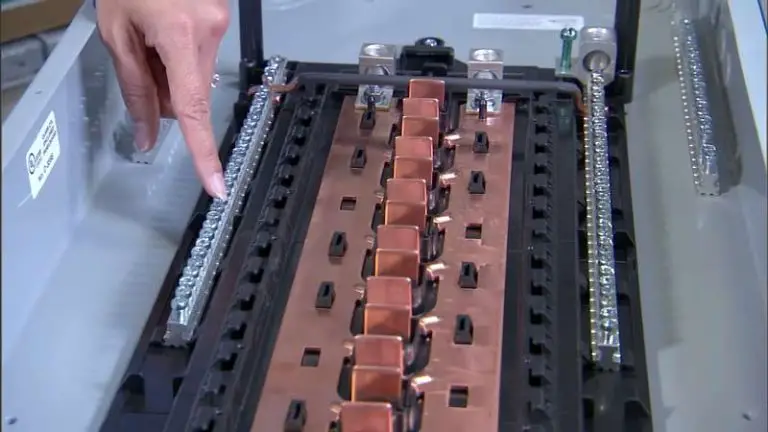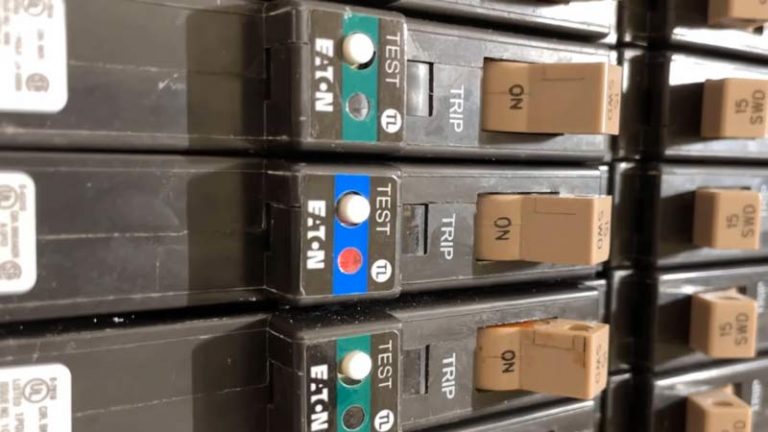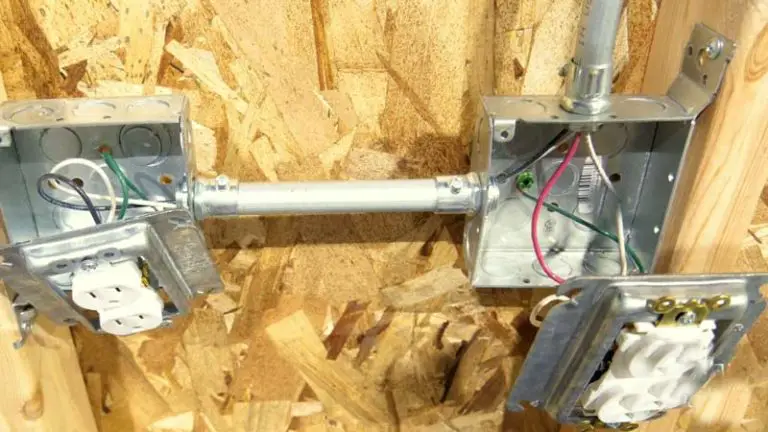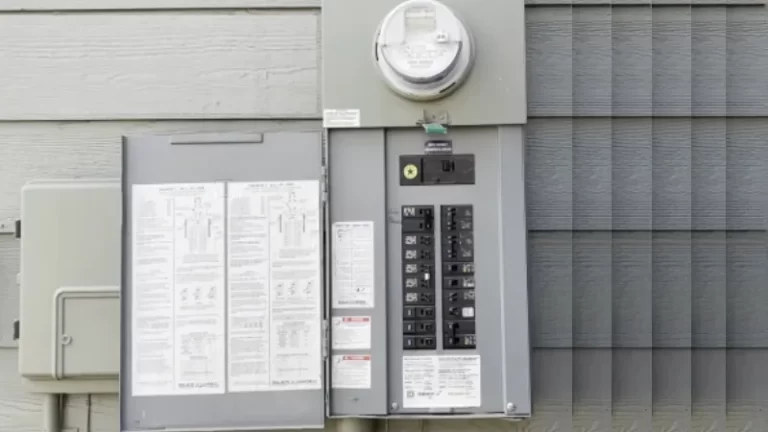Multiple Appliances Not Working? Here’s Why (And How to Fix It Fast)
It’s a frustrating and often alarming scenario: you turn on the coffee maker, and suddenly the microwave goes dark. You try a different outlet, and nothing happens. Soon, you realize an entire section of your home is without power, leaving multiple appliances dead in their tracks. This isn’t just an inconvenience; it’s a clear signal from your home’s electrical system that something is wrong.
When several appliances stop working at once, the root cause is rarely the appliances themselves. It typically points to a broader issue within your home’s electrical circuits. This guide will walk you through the essential troubleshooting steps to safely diagnose the problem, from simple resets to identifying signs that require a professional electrician.
You'll Learn About
First, Check the Obvious: Is the Power Out?
Before you dive into your home’s wiring, take a moment to look outside. Are your neighbors’ lights on? A quick check with your local utility company’s website or app can confirm if there’s a widespread power outage in your area. This simple step can save you a significant amount of time and unnecessary troubleshooting.
If the outage is confirmed to be just your home, the problem lies within your electrical system. The most common culprit is a safety device doing its job. Let’s start with the heart of your home’s power: the circuit breaker panel.
The Circuit Breaker Panel: Your First Line of Defense
Your circuit breaker panel is the central hub that distributes electricity to all the different areas of your house. Each switch, or breaker, is designed to protect a specific circuit from drawing too much electrical current, which could cause overheating and a potential fire. When a breaker “trips,” it’s a safety measure cutting off power to that circuit.
How to Identify and Reset a Tripped Breaker
Locating your breaker panel is the first step; they are commonly found in a garage, basement, or utility closet. When you open the panel door, you’ll see rows of switches. A tripped breaker will be in a different position than the others—not fully “ON” or “OFF,” but stuck in the middle. Some may even have a red or orange indicator window.
To reset the breaker, follow this crucial two-step process:
-
Push the tripped breaker firmly to the full “OFF” position. You should feel a click. Simply pushing it towards “ON” from the middle position will not work.
-
Now, push the breaker back to the “ON” position. Power should be restored to the affected appliances.
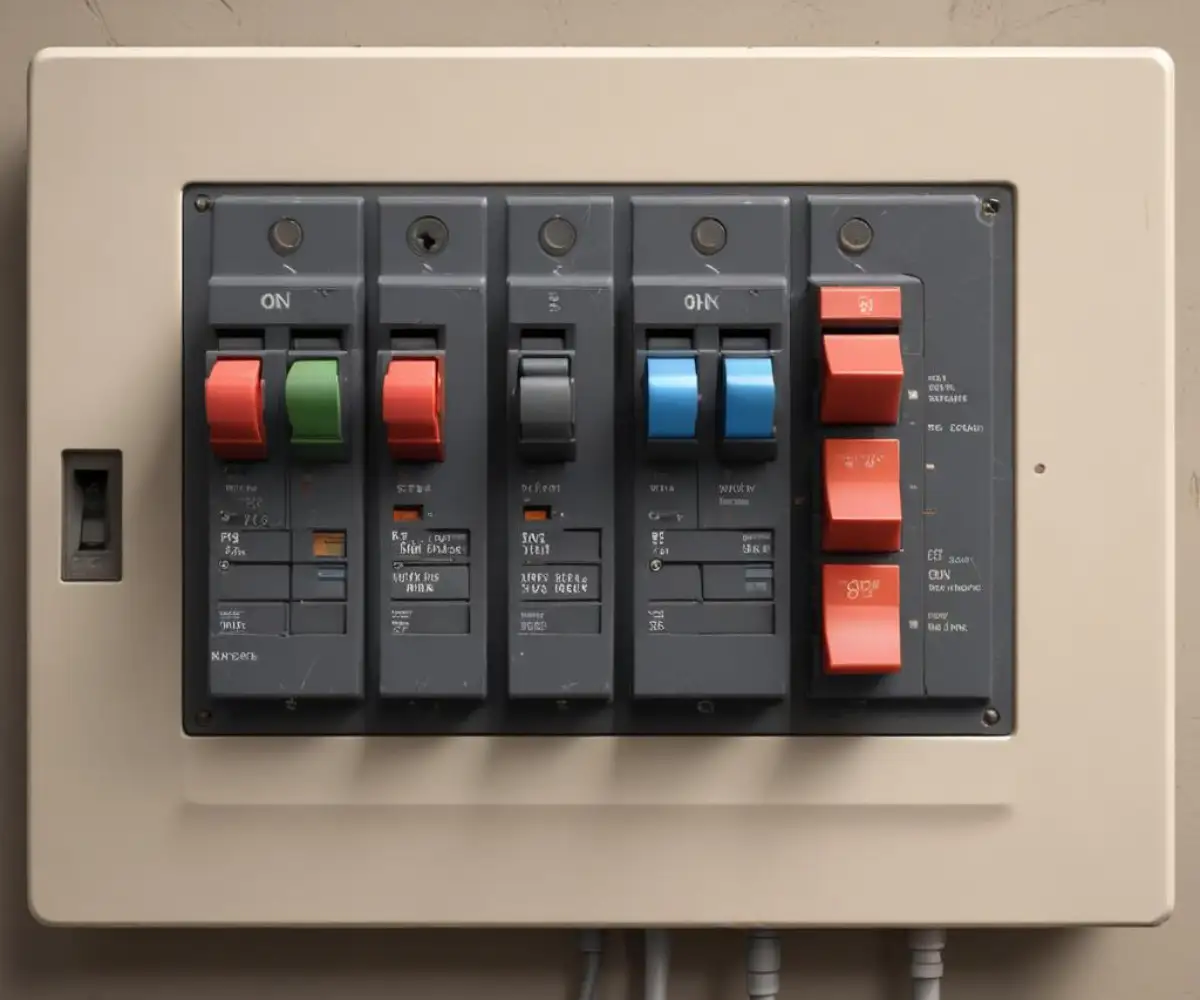
What if the Breaker Trips Again Immediately?
If the breaker trips again right after you reset it, you have a more persistent issue. Do not keep resetting it. This is a clear warning sign of either an overloaded circuit or a more dangerous short circuit. Unplug everything from the outlets on that circuit before trying to reset the breaker one more time. If it stays on, one of your appliances is likely the problem.
An overloaded circuit is the most common reason for a repeat trip. This happens when too many high-power appliances are running on a single circuit simultaneously. For instance, running a microwave, a toaster, and an electric kettle all at once can easily exceed the circuit’s capacity. The solution is to redistribute these appliances to outlets on different circuits.
A short circuit is a more serious problem. It occurs when a hot electrical wire comes into contact with a neutral wire or a ground wire. This can be caused by faulty appliance wiring or damaged wiring within your walls. If you suspect a short circuit, especially if you notice a burning smell or discolored outlets, it’s time to call an electrician.
The Hidden Culprit: A Tripped GFCI Outlet
If the circuit breaker wasn’t the issue, the next place to look is your GFCI outlets. A Ground Fault Circuit Interrupter (GFCI) is a special type of outlet designed to protect you from electrical shock. They are required in areas where electricity is used near water, such as kitchens, bathrooms, laundry rooms, and outdoor spaces.
What many people don’t realize is that one GFCI outlet can protect several other standard outlets connected to it on the same circuit (known as being “downstream”). If this single GFCI outlet trips, it will cut power to all the connected outlets, making it seem like a larger issue. This is a very common cause for half of the outlets in a kitchen or bathroom suddenly not working.
How to Reset a GFCI Outlet
Finding and resetting a GFCI is straightforward. Look for an outlet with two small buttons between the sockets, usually labeled “TEST” and “RESET.”
-
Unplug all appliances from the dead outlets.
-
Press the “RESET” button on the GFCI outlet firmly until you hear a click.
-
Test the outlet by plugging in a small device. If it works, your other downstream outlets should now have power as well.
If the GFCI outlet won’t reset or trips again immediately, it could indicate a faulty appliance creating a ground fault, or the GFCI outlet itself may need to be replaced. Dealing with electricity near moisture can be dangerous, as an electrical fault combined with a problem like water coming through floorboards can create a severe hazard.
When DIY Fixes Aren’t Enough: Deeper Electrical Problems
Sometimes, the problem goes beyond a simple tripped breaker or GFCI. Certain symptoms point to more significant issues within your electrical system that require the expertise of a licensed electrician. Attempting to fix these yourself can be extremely dangerous.
Potential Main Breaker Failure
The main breaker is the large, primary switch in your panel that controls power to your entire home. If you’re experiencing a partial outage where about half of your home has power and the other half does not, it could be a sign that one of the two “legs” of your electrical service has failed at the main breaker. This is not a DIY repair and poses a serious risk of electrocution.
Signs of Loose or Faulty Wiring
Over time, the wiring in your home can degrade or become loose. Connections inside the breaker panel, outlets, or junction boxes can weaken, leading to poor electrical contact. These issues often present warning signs that should never be ignored.
Symptoms include flickering or dimming lights, a distinct buzzing sound from outlets or switches, and faceplates that are warm to the touch. These are all indicators of arcing—a dangerous condition where electricity jumps between loose connections, generating intense heat that can easily start a fire.
| Symptom | Possible Cause | DIY Solution | When to Call a Professional |
|---|---|---|---|
| Multiple appliances out in one area | Tripped Circuit Breaker | Locate panel and reset the breaker (OFF then ON). | If the breaker trips immediately after reset. |
| Outlets in kitchen/bath not working | Tripped GFCI Outlet | Find GFCI outlet and press the “RESET” button. | If the GFCI will not reset or trips repeatedly. |
| Breaker trips whenever a specific appliance is used | Overloaded Circuit or Faulty Appliance | Unplug other devices from the circuit; test appliance on another circuit. | If the breaker trips with only one appliance plugged in. |
| Half the house has no power | Main Breaker or Utility Issue | Check with utility for outages. Do not touch the main breaker. | Immediately, if it’s not a utility-wide outage. |
| Burning smell, buzzing sounds, or hot outlets | Short Circuit or Loose Wiring | Turn off the corresponding breaker immediately. | Immediately. This is a serious fire hazard. |
Understanding Your Home’s Electrical System to Prevent Future Issues
Preventing future power losses often comes down to understanding and respecting the limits of your home’s electrical circuits. Each circuit is designed to handle a specific maximum load. Consistently pushing a circuit beyond its limit will not only cause frustrating trips but also lead to premature wear on your electrical system.
How to Avoid Circuit Overloads
A key strategy is to be mindful of where you plug in high-wattage appliances. Devices that generate heat—such as hair dryers, space heaters, toasters, and coffee makers—are among the biggest power consumers in a home. Avoid running more than one of these on the same circuit at the same time.
Major appliances like refrigerators, dishwashers, and central air systems should have their own dedicated circuits to ensure they have sufficient power without interfering with other devices. For example, if only your AC has failed, it might be a specific issue like having no power to the thermostat rather than a general outage.
A sudden and unexplained increase in your electricity usage could also be a symptom of an underlying electrical fault. If you’ve also been shocked by a surprisingly high power bill, it might be connected to a faulty appliance or wiring issue that’s drawing a constant, wasteful current.
When You Absolutely Must Call an Electrician
While many common issues can be resolved with a simple reset, some situations are non-negotiable emergencies. Your safety and the safety of your home are paramount. Turn off the power at the main breaker if possible and call a licensed electrician immediately if you experience any of the following:
-
A persistent burning smell coming from the breaker panel, outlets, or switches.
-
Any visible sparks, smoke, or scorch marks on your electrical components.
-
Audible buzzing, humming, or crackling from the breaker box.
-
A circuit breaker that feels hot to the touch.
-
A breaker that will not reset or trips instantly, even after unplugging everything on the circuit.
-
You feel uneasy or unqualified to diagnose the problem yourself.
What to Expect from a Professional
When you call an electrician, they will use specialized tools like multimeters to safely test your circuits and pinpoint the exact cause of the failure. They can identify and repair faulty wiring, replace worn-out breakers or outlets, and ensure your home’s electrical system is safe and up to code.
Restoring Power and Your Peace of Mind
Facing a sudden loss of power to multiple appliances can be stressful, but a methodical approach can quickly lead to a solution. By starting with the simplest checks—a utility outage, a tripped breaker, or a GFCI reset—you can often resolve the issue yourself in minutes.
However, it is just as important to recognize the signs of a more serious electrical problem. Prioritizing safety and knowing when to step back and call a professional is the smartest thing any homeowner can do. By following these guidelines, you can safely restore power and ensure your home’s electrical system remains reliable for years to come.

